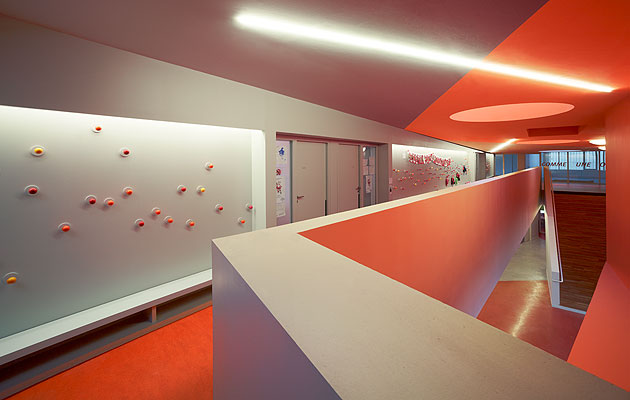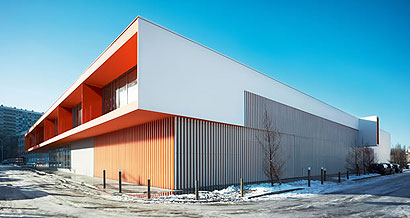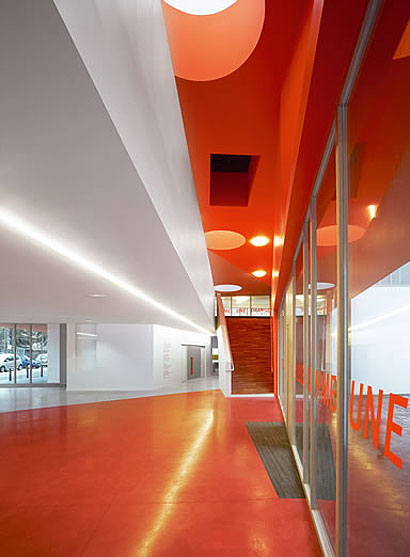|
|
||
|
Strasbourg-based architect Dominique Coulon and Associates has built the new Josephine Baker School in La Courneuve, a suburb to the north of Paris. The building houses both a nursery and primary school as well as a canteen and library, all wrapped around each other in a series of complex and bright spaces. The building is low and spread out over its trapezoidal site. At the centre is a courtyard space with small and partially concealed entrances. The primary school is located on the west edge in a number of boxes that rise to a maximum of three storeys high, while the nursery school on the other side is contained on the first floor and cantilevers out over the edge of the site in order to give the building civic prominence – an effect that the architect describes as “putting pressure on the public space”. Twisting around the building are a series of ramps that take the students up from the public space at ground level to their classrooms, and then continue around the building to concealed athletics and playground facilities on the roof, or “fifth facade”. Throughout the building, surfaces are coloured in a palette of white and a glaring set of orange tones, a move humorously accompanied by a legend on the windows that reads “La terre est bleue comme une orange” (The world is blue like an orange) – a line from a poem by Paul Éluard. The strange, angular formal language is partly the result of a rather intriguing masterplan by architect Bernard Paurd, a response in its turn to the area’s rather fraught history. The site on which the school stands was until recently traversed by a gigantic system-built slab block. Named Presov, before it was ceremoniously dynamited in 2004, the behemoth was part of the Cité des 4000, a massive and notorious system-built housing estate. Indeed, La Courneuve has become well known as one of the most deprived suburbs of Paris, and was a focus of much of the violence in the 2005 riots. Paurd’s masterplan called for the footprint of the block to remain as an unbuilt area, and created a series of lines and markers pointing off to various landmarks, existing and absent. It is these paths that give the project its interesting awkwardness, forcing it off balance and into ungainly forms. The knowledge of the cultural context of the project explains the architect’s need to create more of a civic presence for the school. This also helps justify the eyecatching colour scheme, with its cheery, bright orange spaces offering an optimistic counterpoint to the bleakness of the existing environment. However it’s a typical approach for Dominique Coulon, whose designs frequently make use of powerful, polychromatic effects with light and surface. France has been producing school design of great interest recently, and with its simple, rugged, yet exuberant architecture, the Josephine Baker School is another good example.
|
Image Olivier Nicollas
Words Douglas Murphy |
|
|
||






















